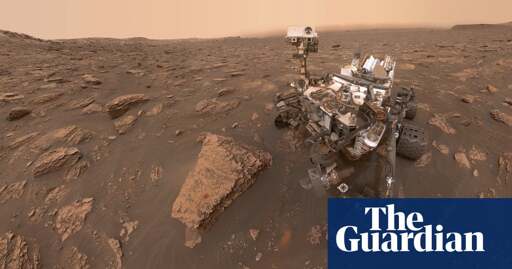Summary
NASA’s Curiosity rover discovered the largest organic compounds ever detected on Mars in a 3.7-billion-year-old rock sample from Yellowknife Bay.
The compounds, including long-chain alkanes, could result from chemical reactions or remnants of ancient Martian life.
Scientists found hints of fatty acid patterns similar to those in terrestrial biochemistry, but no definitive evidence of life.
Researchers call it the best opportunity yet to identify potential life remnants on Mars, though further analysis requires returning the samples to Earth for isotope testing.



FYI in science the word “organic” does NOT mean life-related. Organic basically just means carbon
So my carbon fibre bicycle is organic? Neato.
Yup. Carbon fiber is probably categorized as organic chemistry. It’s a historical term that has broadened to mean basically all carbon chemistry
I had a friend who was convinced that we had found extraterrestrial life long ago. Not little green aliens. Se just read all those “organic compounds founds”, and assumed it was life. So she was casually living in a reality where humanity had found evidence of extraterrestrial life.
True.
We found alkanes.
Looking at Earth, all deposits of alkanes (petroleum) stem from decayed biological matter.
But we think that Earth’s first alkanes came from abiotic photochemistry in its primordial reducing atmosphere. Similar processes are abiotically producing petroleum today on Saturn and its largest moon Titan.
Most likely, all petroleum on Earth is tied to life because life has found a way to cycle all non-diamond carbon in our crust, not because petroleum is inherently biological (as you wisely point out).
On Mars, we don’t know if generic petroleum that we find is primordial or from decayed life.
Gale Crater is a Noachian crater (early days), and could have gotten filled with whatever primordial goop was falling out of the sky after outgassing during Mars’s Hesperian. As Mars outgassed icy elements (CHNOPS) that could not stay bound in rocks that cooled with age, that material would get processed by the atmosphere and end up sedimenting out into sedimentary rocks
like Curiosity is looking atwithin the basin where Curiosity is looking. I don’t know enough about Hesperian atmospheric conditions to say, but if it were reducing enough abiotic petroleum synthesis could be possible.ETA: Those are Mars’s first two Geologic phases. Curiosity is studying sediment deposited at the bottom of this ancient crater when it was a lakebed in the warm, hospitable Amazonian. The rocks being studied and the organics within them were deposited during this hospitable phase, before the solar wind blew off enough of Mars’s atmosphere to put it into its current dormant state (not dead, carbon is still cycling… barely…).
Then the only question is whether this petroleum has been cycled by life. Fatty acids are pretty easy to produce from abiotic alkanes by reacting with CO2, which Mars had plenty of. I don’t know how these researchers determined that these alkanes likely came from fatty acids (I’m not a petroleum geologist and cannot fluently read fossils), but that alone is not an indication that those fatty acids necessarily came from something living. ETA: Thinking of the timing, to be deposited in these rocks, then the organics were still being cycled during the habitable Amazonian, which is long after the volcanic Hesperian when we suspect that the abiotic generation of fats was possible.
However: (judge this harshly)
Oil would float in these lakes, were it not for the life dragging it to the bottom.